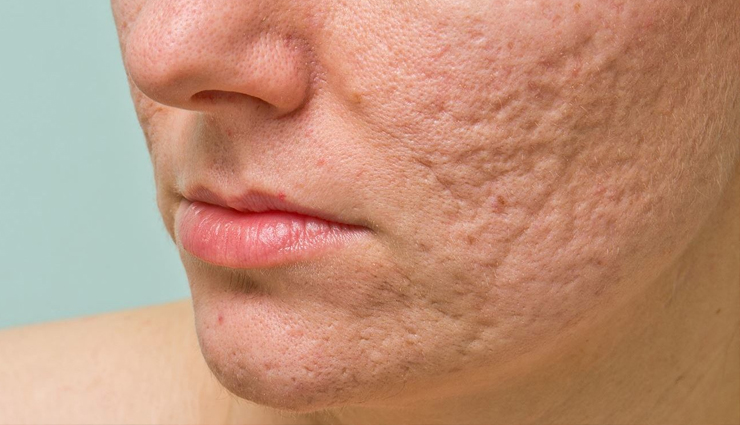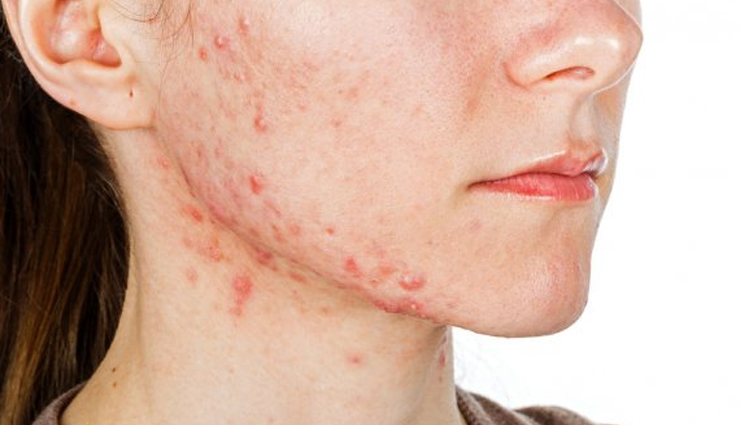
Scars start as reddish to pink and fade with time, turning into a color darker or lighter than your skin.
The type of scar depends on the injury, location of the scar, skin type, age of the person, their nutritional status, inherited scarring tendency, and many other factors.
The most common causes of scars include surgery, infections, and injury. Preventing wounds can help avoid scar formation.

Scars may develop anywhere on the body and can vary largely depending on their composition. They have different types, including:
# Keloid scars
Excessive collagen production, which continues even after wound healing, leads to tissue overgrowth above skin level and is known as keloid scars.
Keloid scars are initially purple or red and gradually fade over time. They are itchy and painful and may restrict movement when near a joint.
# Contracture scars
Contracture scars are generally formed due to an injury that causes significant tissue loss, such as burns or injury to the joints. The skin and underlying tissue pull together for healing, often restricting movement.
Hypertrophic scars appear on the wound site in raised, thick, discolored clusters. Generally, they are uncomfortable and red, often widening with time. It might happen after gynecomastia Singapore too, so it’s important to talk to the doctor about what your healing procedure should be in order to avoid this.
# Atrophic scars
Atrophic scars develop below the skin surface, producing a sunken appearance. They become more prominent with time due to aging. The most common causes of atrophic scars are chickenpox and severe acne.
Striae, or stretch marks, are formed due to breaks in the connective tissue, caused by rapid shrinking or growing of the skin. It is common with rapid weight loss, adolescence, pregnancy, and bodybuilding.
# Adhesions
Adhesions are scars that can develop between unjointed internal organs. They often create problems during surgery.
# Acne scars
Pimples or acne are due to the clogging of skin pores by dead skin cells and oil, enabling bacterial growth and pus formation. When not healed properly, the pimples can form scars.
# Surface treatment
Also known as skin resurfacing procedures, these treatments help remove the damaged skin layer, making way for new and healthy skin to form:
- Dermabrasion: This procedure uses an electric machine for scraping the top layer of skin to reveal new, healed, and smoother skin. It is commonly used for minor irregularities in the skin surface, small scars, acne scars, and surgical scars.
- Chemical peels: This treatment helps reduce sun damage, superficial scars, and irregular pigmentation of the skin with the use of chemicals that aid in the removal of the surface layer of the skin.
- Laser resurfacing: Focused light is used generally to reduce the appearance of acne scars. It can be performed using wounding/ablative lasers that remove the top layer of the skin or non-wounding/non-ablative lasers that work by inducing collagen production.
Three different types of injections are used for reducing scar appearance:
- Dermal fillers: These injections can be used to plump up depressed scars and include semi-permanent fillers, synthetic solutions, and hyaluronic acid.
- Cortisone injections: Corticosteroids are directly administered into a keloid or hypertrophic scar to help reduce its size by breaking the collagen fibers. Additionally, their anti-inflammatory properties aid in reducing swelling, itching, tenderness, and redness.
- Collagen injections: These injections are used to temporarily fill in the sunken areas with collagen, a natural protein. It is vital to ensure that you are not allergic to collagen before undergoing this treatment.
Different surgical interventions can treat major scars, which include:
- Cryosurgery: The surface layer of the skin is frozen with liquid nitrogen to help reduce the size of the scar or remove superficial skin lesions such as actinic keratosis.
- Punch grafts: Scarred skin is replaced with small skin grafts to treat deep acne scars.
- Surgical scar revision: A scar formed due to improper healing or other circumstances may be removed using plastic surgery techniques, repaired under local anesthesia, and then allowed to re-heal in a controlled way.
# Radiation therapy
If the scar is resistant to other therapies, radiation may be used.